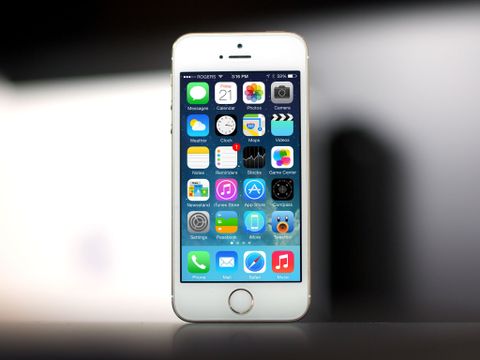The iPhone 5s launched roughly 6 months ago. It was greeted by the usual ennui over its unchanged design and un-embiggened screen, and skepticism over the real-world utility of its Touch ID fingerprint identity sensor and 64-bit Apple A7processor. The iSight camera was well received, even though some mourned the lack of optical image stabilization, and the new color option became the subject of late night jokes. Then it launch and Apple once again couldn't keep it on the shelves; it was veritable gold rush.
I published my original iPhone 5s review ten days later. Spoiler: Even though it was similar in so many ways to the iPhone 5, it was also better in many ways that really counted. Since then I've been using my iPhone almost every day, all day, for 6 months. So, has anything ended up being any better or any worse than I first experience? Has any of the hardware broken down or the software improved? Half a year later, how is the iPhone 5s holding up?
iPhone 5s anodization endurance

Even though the iPhone 5s, like every s-type iPhone, looks almost identical to the previous year's model, there are a couple of differences. Aside from the new bi-color flash element, Apple replaced the scratch-and-chip prone slate gray finish of the iPhone 5 with a new space gray finish, and added an all-new gold finish to the palette as well.
Black is the hardest color to anodize. By the spring of 2013 my slate gray iPhone 5 looked as battle-scarred as a Corellian star freighter. The slate gray, which is less charcoal and more gunmetal, has held up much, much better. Chips are less frequent and when they, or scratches, occur, theyr'e less noticeable. So, while the color might not be as close to black as some may like, the durability has been significantly improved.
The silver iPhone 5 held up exceptionally well. Scratches and chips could only be seen at certain angles and in certain lighting. The silver iPhone 5s is identical and the gold has proven to be the same as well. My gold iPhone 5s has been naked for most of its existence and, slight wear and tear aside, you'd be hard pressed to know it wasn't new from a distance.
Whether or not you like the idea of Apple sticking with a similar design two years in a row, the extra time has let them really nail the aluminum unibody finish. With the iPhone 5c bringing back the plastic and the iPhone 6 rumored to be bringing in the even tougher sapphire glass, it'll be interesting to see just how much further Apple can push device durability in the future.
iPhone 5s: Apple A7 benefits
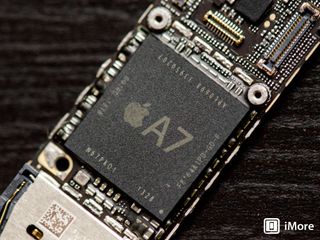
With the Apple A7 system-on-a-chip (SoC), Apple not only got to 64-bit on mobile first, but got there far ahead of everyone else. That led to some consternation from other manufacturers and confusion from the media. For customers it led many to wonder how much, if at all, it really mattered.
Yes, the cleaner instruction sets and greater register counts enable developers to make better, faster apps. Yes, now that we've seen the iPad Air and Retina iPad mini launch with the same chips we can see how it'll also enable Apple to get their entire 2013 iOS device lineup on the same, incredibly powerful, more future-proof platform.
For the customer, however, the Apple A7 is a monster of a processor that not only drives the iPhone 5s smoothly but, by virtue of its secure enclave and image signal processor (ISP), enables things like Touch ID, Burst Mode, Auto HDR, dynamic exposure, and more.
If you remember how long it used to take for the iPhone to save HDR images, seeing the iPhone 5s do so instantly is one of the most visual, most impressive demonstrations of just how much a chipset can make a difference.
Apps that take full advantage of the A7 "Cyclone" CPU being 64-bit, like video and audio editors, are still few and far between. The games that take full advantage of the A7 GPU, specifically OpenGL ES 3.0, look great but that has no real baring on game play.
Performance, identity, photography, and everything else enabled by the A7 is something any iPhone user can appreciate, even after 6-months when it's taken completely for granted.
iPhone 5s: M7 motivator
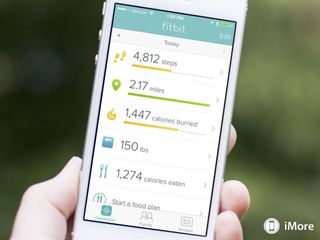
Apple's first coprocessor, the Apple M7, is focused on motion (accelerometer, magnometer/digital compass, and gyroscope). For a long time the iPhone has known where it was in space — how fast it's moving, in what direction, and at what orientation — and could record that information every time it was woken from sleep. That was okay but left a lot of gaps. With the M7, the iPhone 5s can record that information almost all the time. That led to some initial privacy concerns but Apple had explicit permissions and an on/off toggle in place right from the start.
I wasn't certain how valuable the M7 would be. I had a dedicated fitness trackers from Nike, Fitbit, and Jawbone, so did I really need my phone?
Turns out, absolutely. Thanks to the M7 when I install a new fitness app I'm no longer starting from scratch. The M7 is already storing about a week's worth of my motion data and it can load that right into the new app. Likewise, if I switch apps, I don't start all over again. I get that week-long buffer. Decoupling recent data from individual apps not only lowers the barrier of transition but increases motivation. The minute I launch that new app instead of seeing a blank screen I see my activity for the last week and I immediately want to start moving again.
6-months later, I've come to rely on that.
iPhone 5s: Touch ID reliability
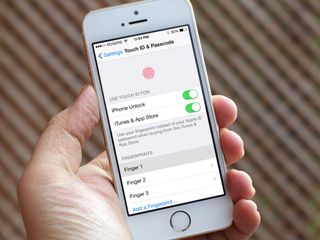
A lot of fear, uncertainty, and doubt (FUD) followed Apple's introduction of the Touch ID fingerprint identity sensor. Some worried it would be frustrating to use. Others that it would beam your fingerprints straight to government surveillance agencies. But Apple took their time with Touch ID and made a really smart implementation that involved a capacitively-trigged, high resolution sensor locked to a specific A7 chipset that keeps data out of RAM or any part of the accessible OS. In the 6 months since launch Touch ID has been susceptible to what every basic biometric fingerprint sensor is susceptible to — laboriously created fake fingerprints — but there have been no reports of TouchID data being compromised.
There were, however, frequent reports of TouchID becoming less and less reliable over time. A software issue, Apple fixed it in the iOS 7.1 update released earlier this month.
I've been using Touch ID constantly since launch. It worked roughly 95% of the time before the update and is the same if not better now. For those who were experiencing degradation, Touch ID is significantly better now than it was before.
When Touch ID does still fail is when any form of water or moisture has come into contact with my finger. That's a known issue with these types of sensors in general but also hopefully something that can be improved in the future.
Like I said in my iPad Air review, Touch ID is so good it now takes me several excruciating seconds to remember it doesn't exist on other devices, like the iPad, and then a few more to manually slide-to-unlock with a passcode — wait for it — like an animal.
iPhone 5s: iSight camera quality
Unlike Nokia or HTC, Apple haven't gone with big, bulging lenses or optical image stabilization systems for their iSight camera. They've gone with modest, high quality optics and backed it up with state-of-the-art image signal processing (ISP). It's what they did for every iPhone since the iPhone 4 and it's what they've done again for the iPhone 5s. It's what lets the iPhone go shot-for-shot against cameras with better hardware and more than hold their own. It's also what lets them do all the auto white balancing, focusing, sharpening, etc, all powered by the Apple A7 chipset. It's also what allows for 120fps 720p slo-mo video.
I've used slo-mo infrequently over the last 6 months, mostly as a party trick or to entertain my godkids. They love not only watching things fall down in bullet time but listening to their voices being distorted as well. It's cool. It's fun. But what's made a far bigger difference for me is the improvement in every day photography.
The iPhone 5s just captures better pictures in more situations. Burst mode means I can often get a clear bit of action or a group photo where no one is blinking. Dynamic exposure means I can get a panorama that doesn't look like Harley Quinn, lost to shadow on one side and bleached out on the other. Even the TrueTone bi-color flash on the iPhone 5s, which I try to avoid using whenever possible, really does produce better color balance in the situations where I have no other choice but to use it.
One of the biggest improvements is also one of the most recent. Thanks to iOS 7.1 and Auto HDR, I no longer have to think about the dynamic range of a scene or fuss with settings and miss the moment. I just leave it on and the pictures turn out great.
Auto HDR specifically means, 6 months later, the iPhone 5s iSight camera is even better for me than it was at launch.
iPhone 5s: Voice and data consistency

After 6 months of heavy use, iPhone 5s voice and data has been an improvement over previous generation iPhones but only slightly. Most of the time it handles dropping from LTE to 3G or even EDGE and back with utter transparency. Sometimes it drops and while it claims to remain on-network data has stopped working. Very rarely I've lost signal or not been able to return to LTE at all. Then I have to reboot to get back on the network. Again, that's not a new problem, but it's not been solved yet either.
Likewise the excessive heat and battery drain that comes from poor signal areas when the iPhone blasts the radio into the stratosphere trying to get and keep a connection. It happens far less frequently for me than with previous iPhones but it still happens, most often at airports or at conferences with big buildings and heavy congestion. It's especially bad when roaming, which I'd hoped would no longer be the case thanks to the newer generation chipsets.
These are all boundaries-of-technology issues. In normal, day-to-day usage the iPhone 5s is screaming-fast on LTE. I've been getting between 40 and 90mbps down and 15-30mbps up. When I tether I quickly forget I'm on LTE — it's quite often faster than Wi-Fi.
Voice has been fine as well. I did have an occasional issue where I couldn't hear hear the person I called for a few seconds after they answered but iOS 7.1 fixed that.
A far bigger change over the last 6 months, at least for people in the U.S., has been the new early upgrade and family rate plans pushed by T-Mobile and reacted to by Sprint, AT&T, and Verizon. Some of them are outright double-dip scams. Others can save you some real money.
iPhone 5s: Battery life
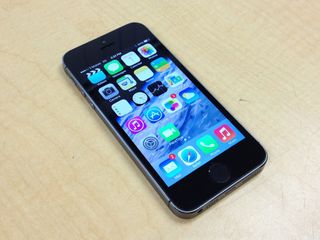
iPhones keep getting thinner, keep getting more — and more powerful — features, and yet Apple keeps the line at 10 hours for battery life. It's some form of eldritch might, I'm certain. As a result, over the last 6 months, my iPhone 5s has been just as good at keeping a charge as my iPhone 5, iPhone 4s, iPhone 4, etc. before it.
It still faces the same challenges, many of which are enumerated above, and it can vary a lot depending on which apps are running and how many services are in use (GPS, Voice over IP, and others still hit the battery like a freight train). In some perfect world Apple would detect when an iPhone was draining faster than normal and either restart whatever background radio or app was causing it, next-generation OS X Mavericks battery shaming-style. But we don't live in that world yet.
On a clean install of iOS 7 or iOS 7.1 on an iPhone 5s, however, I'm still getting almost as long a charge now as I got 6 months ago. That's not a fair measure, of course, since most people won't do clean installs and the longer software is running, the more often it's been restored from backup, the greater the chance errors might pop up. That said, on a restore I'm getting very similar results, though occasional drains happen with slightly greater frequency.
Overall, you should expect great battery life on an iPhone 5s not only the day you buy it, but for months and months thereafter. If you're not getting it, there's a problem and one that can and should be addressed.
iPhone 5s: iOS 7.1 fixes and new features
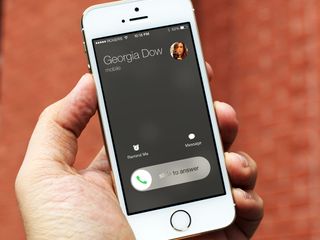
iOS 7.1 arrived almost 6 months after the launch of iOS 7 and the iPhone 5s. It fixed longstanding problems like the TouchID reliability issue as well as the frequent and frustrating Home screen crashes. It also introduced new features like Auto HDR and re-introduced old ones like the Month/List combo view in Calendar.
The short version is iOS 7.1 makes the iPhone 5s better and more stable. The long version is:
iPhone 5s: The bottom line... 6-months later

Overall the iPhone 5s is as good a phone now as it was when I first bought it back in September of 2013. In many appreciable ways it's even better. Some of that is thanks to bug fixes like the Home screen crash patch or the Touch ID degradation patch, but some are due to new features as well like Auto HDR and the improved iOS 7.1 interface changes.
New competitors like the Samsung Galaxy S5 and HTC One (2014) will be launching soon but I find myself even less interested in them this year than I was their progenitors last year. That's not because I don't like or even envy some of their features. On the contrary, I love that companies less conservative and focused than Apple are trying all sorts of amazing things. It's that my phone is something I've come to depend on even more over the years. It's not my primary computing platform yet but it's getting closer all the time. Because of that, because of how important it is to me, Apple's consistency and quality have become even more important.
I can and have gotten by on other phones over the last few months, including the Nexus 5 and Lumia 1020, but it felt like just that — getting by. I don't need or want to waste time with customizations or lumps that feel like bricks in my pocket. I just want to pull my phone out, find the app I need, and do what I want to do with it easily and reliably.
And 6-months later, that's exactly where the iPhone 5s excels.

Rene Ritchie is one of the most respected Apple analysts in the business, reaching a combined audience of over 40 million readers a month. His YouTube channel, Vector, has over 90 thousand subscribers and 14 million views and his podcasts, including Debug, have been downloaded over 20 million times. He also regularly co-hosts MacBreak Weekly for the TWiT network and co-hosted CES Live! and Talk Mobile. Based in Montreal, Rene is a former director of product marketing, web developer, and graphic designer. He's authored several books and appeared on numerous television and radio segments to discuss Apple and the technology industry. When not working, he likes to cook, grapple, and spend time with his friends and family.
